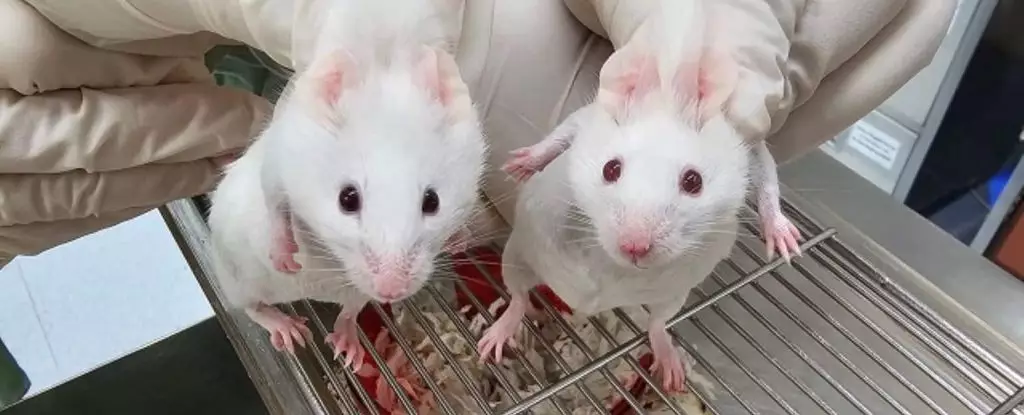The realm of genetics continually presents us with remarkable revelations about the web of life and its evolutionary trajectory. In a groundbreaking experiment conducted in Hong Kong, scientists created genetically modified mice that have introduced intricate dimensions to the understanding of pluripotency and the origins of multicellular life. By incorporating genes from choanoflagellates—single-celled organisms often viewed as a precursor to animals—researchers have provided compelling evidence suggesting that fundamental traits of multicellular organisms may be rooted far deeper in evolutionary history than previously anticipated.
Choanoflagellates are simple microorganisms that share a close evolutionary link with animals, having remained relatively unchanged since long before complex multicellular organisms came into existence. These tiny creatures are pivotal to our understanding of the transition from single-celled to multicellular life. While they do not possess the ability to form stem cells, which are vital for the development of multicellular organisms, choanoflagellates carry genetic material that resembles the pluripotency genes found in higher animals.
A particularly striking aspect of the Hong Kong study was the splicing of choanoflagellate genes into the DNA of mice, resulting in offspring that exhibited a blend of features reflecting this unprecedented genetic heritage. This maneuver not only highlights the versatility and adaptability of genetic components across time and species but also stimulates a deeper inquiry into the evolutionary narrative that has shaped life on Earth.
Pluripotency—the unique capacity of stem cells to develop into various cell types crucial for organismal complexity—has long been thought to originate with the advent of multicellular animals around 700 million years ago. However, the findings from the mouse experiment suggest that this capability may predate complex life forms. Choanoflagellate gene versions presenting characteristics akin to mammalian pluripotency genes indicate that the foundations for the pluripotent state were perhaps already established in these primitive organisms.
The implications are profound; if pluripotency indeed emerged as a driver of evolution rather than a byproduct, it challenges the traditional view of sequential evolutionary development. Researchers led by a team from the University of Hong Kong successfully replaced the Sox2 gene in mice with its choanoflagellate equivalent, which allowed them to monitor the efficacy of these ancient genes in facilitating stem cell functionality within a mammalian framework.
The genetic modification led to the birth of chimeric mouse pups that seemed to embody a curious blend of attributes associated with both their mouse and microbial lineage. Despite exhibiting primarily typical mouse characteristics, the presence of darker fur and altered eye coloration demonstrated the successful expression of choanoflagellate genetic material within a complex mammalian organism. This raises intriguing questions about how fundamental genetic pathways might have evolved and diversified over millions of years, stretching back to the genesis of multicellular life.
Furthermore, the study highlights the differences between choanoflagellate and mammalian genes, revealing a potential path of evolutionary modification necessary for specific functions. For instance, although choanoflagellate POU genes are unable to produce pluripotent stem cells, their mammalian relatives have adapted to fulfill this pivotal role. This trajectory emphasizes the ongoing interplay of genetic evolution and adaptation that continues to shape life’s diversity.
The revelations borne from this experiment not only push the boundaries of our understanding of genetics but also open new avenues for stem cell research and regenerative medicine. Insights gained from the functionality of choanoflagellate genes could inform techniques for developing pluripotent cells needed for therapeutic applications. Understanding how these ancient genes influence cellular behavior could lead to innovative strategies in treating various medical conditions, further accentuating the importance of drawing connections between ancestral life forms and contemporary organisms.
As researchers dissect the insights afforded by these genetic experiments, they unravel a more intricate tapestry of evolutionary biology that implies a shared genetic legacy extending across billions of years. The study underscores how genes, similar in function yet different in origin, can inform our understanding of the biological processes that govern life and complexity on our planet.
The research not only highlights the striking connections between choanoflagellates and complex organisms like mice but may also redefine how we perceive the evolution of pluripotency and multicellularity. Through continued exploration of these ancient genetic pathways, we edge closer to unraveling the mysteries of life’s origin story and the mechanisms driving its incredible diversity.


Leave a Reply